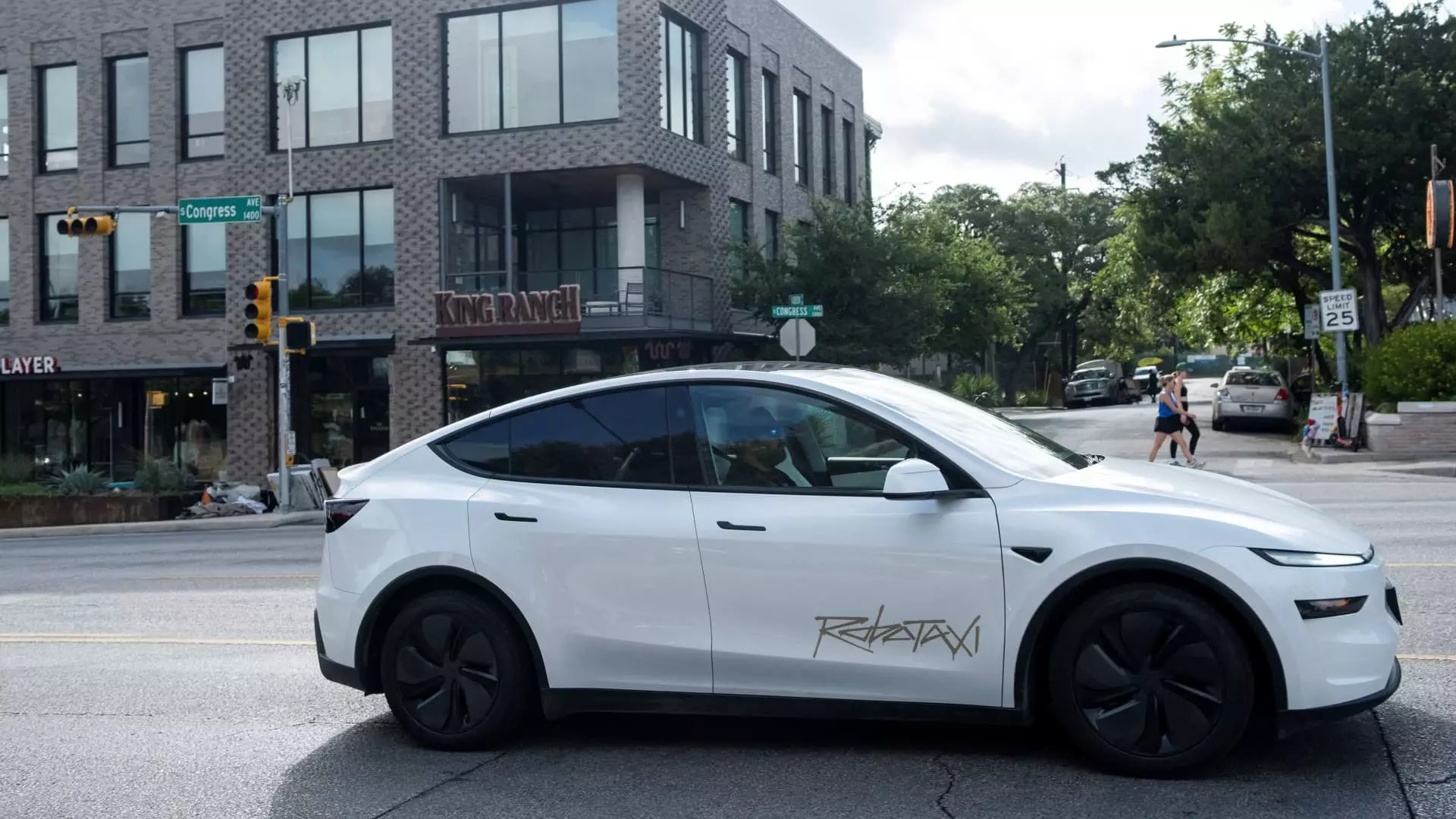Tesla’s foray into autonomous driving has always been a beacon of ambition, and over the weekend, that ambition materialized in Austin, Texas, as the company rolled out its robotaxi service. However, the excitement was swiftly dampened by alarming reports and footage revealing these self-driving vehicles behaving erratically on public roads. Just a day after the pilot program began, social media erupted with videos showcasing one robotaxi navigating against traffic and another coming to an abrupt halt in the presence of parked police vehicles. This chaos prompted the National Highway Traffic Safety Administration (NHTSA) to step forward, highlighting the necessity for oversight in this groundbreaking but troubling venture.
The NHTSA has stated its commitment to road safety, assuring that it is in contact with Tesla to understand the incidents better. This engagement raises significant questions about the extent to which Tesla has prepared for the unpredictable nature of urban driving environments. Are these incidents mere teething problems, or do they signal a deeper issue with the software’s ability to integrate safety and efficiency in real-world scenarios?
Elon Musk’s Vision vs. Reality
Elon Musk’s vision of full vehicle autonomy has colored Tesla’s narrative since the company first introduced its self-driving technology. With claims made over several years promising full autonomy and millions of robotaxis by 2020, the recent rollout of the robotaxi service appears to fall short of expectations. While the stock saw an uptick post-launch, this specific moment lacks the robust trajectory Musk previously promised. The pragmatism that might come from successful autonomous mobility seems obscured by the unfulfilled prophecies of the past.
Tesla has marketed its remnants of ambition, such as the limited deployments to handpicked users under the “early access program,” to individuals predominantly within its promotional circles. This selective testing scheme raises ethical questions. Why limit the rollout to enthusiasts rather than a more diverse cross-section of society that represents ordinary driving situations? Such a method may result in skewed data on performance, complicating regulatory and consumer trust even further.
Innovation under Scrutiny
As the NHTSA moves in to investigate, one must ponder if Tesla’s frenetic pace of innovation at times overlooks essential safety regulations. Reports indicate that the robotaxi pilot in Austin pairs Model Y SUVs with cutting-edge FSD Unsupervised software, a blend that, while intriguing, seems to oscillate dangerously between innovation and recklessness. The initial excitement must not eclipse the foundational aspect of automotive safety that the industry has long upheld.
It’s essential to recognize that the technological landscape surrounding autonomous vehicles is incredibly dynamic, with Tesla facing stiff competition from others in the space. Waymo, a subsidiary of Alphabet, has already established itself with a massive user base who have taken more than 10 million paid rides, showcasing a level of operational stability that Tesla’s recent incidents starkly contrast with. Similarly, Chinese businesses like Baidu and Pony.ai have launched successful commercial endeavors that highlight reliability over mere aspiration.
A Lessons-Learnt Approach
It’s imperative for Tesla to reflect on this chaotic launch, distilling investor fervor into a commitment to real, measurable safety improvements. It is clear that an ambitious strategy, driven by visionary goals, must coexist with the prudent realities of technological adoption in everyday life. If Tesla aspires to lead in autonomous mobility, it must ensure that safety becomes a foundational pillar rather than a secondary consideration.
Through safety testing that genuinely mirrors real-world conditions and open dialogues with regulatory bodies, Tesla could transform its current predicament into an opportunity for a stronger foothold in the autonomous vehicle marketplace. The ability to learn and adapt from this tumultuous opening speaks volumes about a company poised at the edge of revolutionizing transport, but only if it puts safety and accountability at the forefront of its strategy moving forward.

